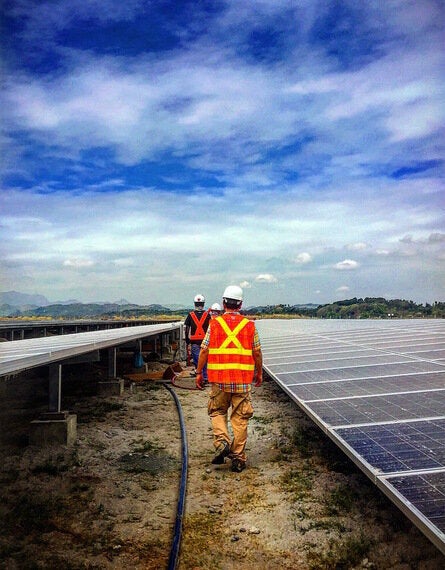
Just as Ikea has started stocking solar panels in its UK stores, Saudi Arabia has announced a modest 9.5 gigawatt renewable energy target, part of its 2030 Vision initiative to move its economy away from oil. This target is not its first. The country had mischievously announced a £74.5 billion solar investment plan in 2012 with no follow-up or deployment whatsoever.
What is likely to happen this time?
At the Paris Climate talks in November and December 2015, Saudi Arabia was quite transparent in its failed efforts to sabotage a climate agreement.
A few months before, at a gathering in May 2015 convened by the French government ahead of the Paris climate talks, Saudi Arabia's oil minister was asked about his country's strategy after the end of the oil era. His answer: We will keep exporting energy, except it will be solar power which we will sell to the world.
The two contrasting Saudi positions make perfect sense.
In the short term, Saudi wants to block meaningful action on climate change because its oil revenues underpin its rulers' mandate to rule, via generous welfare and energy subsidies.
In the medium and long-term, however, thoughtful Saudis understand that the end of the age of oil is near - and the beginning of the end is with us now.
In the interim, Saudi acts as if it were blissfully unaware of the security threats it faces because of climate change.
For example, according to a study in the journal Nature Climate Change, the Gulf Region (Saudi, Kuwait, Qatar, the United Arab Emirates, Bahrain and Yemen) will suffer greatly from global warming, with the potential for the region to sink into heatwaves that are beyond the limit of human survival.
Meanwhile, 4,000 miles away at the other end of the Middle East and North Africa (MENA) region, something special is going on in Ouarzazate, Morocco's famed "door of the desert" berber city. Morocco is building there mega-solar plants that will play a key role in providing power to 1 million people, as well as in ensuring Morocco generates approximately 50 per cent of its electricity from renewable sources by 2020.
Clean Energy Century
In the MENA region, it's clear that clean energy, especially solar power, could have the same impact in the twenty first century that oil production had in the twentieth. The potential for solar power from the desert has been very well understood at least since German scientist Gerhard Knies calculated in 1986 that desert sun can easily power the world, provided the energy can be transported closer to where it's needed.
But the MENA countries with the greatest deserts of all, Saudi Arabia, Algeria, Libya and others, ignored this potential.
Thirty years later, at the 2015 Paris climate talks, 195 countries (Saudi Arabia and Algeria among them) set themselves on a low-carbon path via economy-wide plans sure to be developed and strengthened every year.
We can therefore expect solar power and other forms of clean energy to continue their onward march. These already quasi-monopolise additions to electricity supply worldwide. Order books for new clean energy power plants are up sharply in the United States, China, India, as well as in the developing economies of Africa and Latin America. And when even Ikea has joined the bandwagon, it's clear that solar power has gone mainstream for consumers as well.
Clean Energy in the Middle East
Meanwhile, the clean energy picture in MENA is appalling.
Working against their best interests, oil producing countries are perpetuating fossil fuel subsidies without developing their clean energy sector - while non-oil producing countries are not pushing hard enough, with the notable exception of Morocco. Economy-wide targets for renewables as a percent of their total electricity markets range from a high of 42 per cent in Morocco by 2020, to zero in Qatar, Kuwait and until today, Saudi Arabia.
Indeed Saudi, the region's largest economy, had 17 megawatts of installed renewables capacity in 2014, a ridiculously insignificant number. To put that in context, world solar capacity topped 200 gigawatts in 2015 and is expected to reach 321 gigawatts by the end of 2016.
Perhaps it is possible to be optimistic about a pivot to clean energy in the Middle East. The region certainly benefits from a strongly enabling environment: budgets stretched by oil and gas imports in non-oil producing countries; enormous waste of potential exports in oil-producing countries because of production diverted to subsidised domestic use (Saudi Arabia for example burned nearly 900,000 barrels of oil a month in the summer of 2014 to meet domestic electricity demand which could have easily been met with solar power, resulting in this oil being exported instead of given away domestically essentially for free); and abundant free sun and wind across the region.
To succeed, the Saudi clean energy challenge needs to rise above most planning problems in the Middle East: confused, un-centralised and un-empowered stakeholders; no clear ownership of policies; and economic calculations distorted by oil and shocking subsidies.